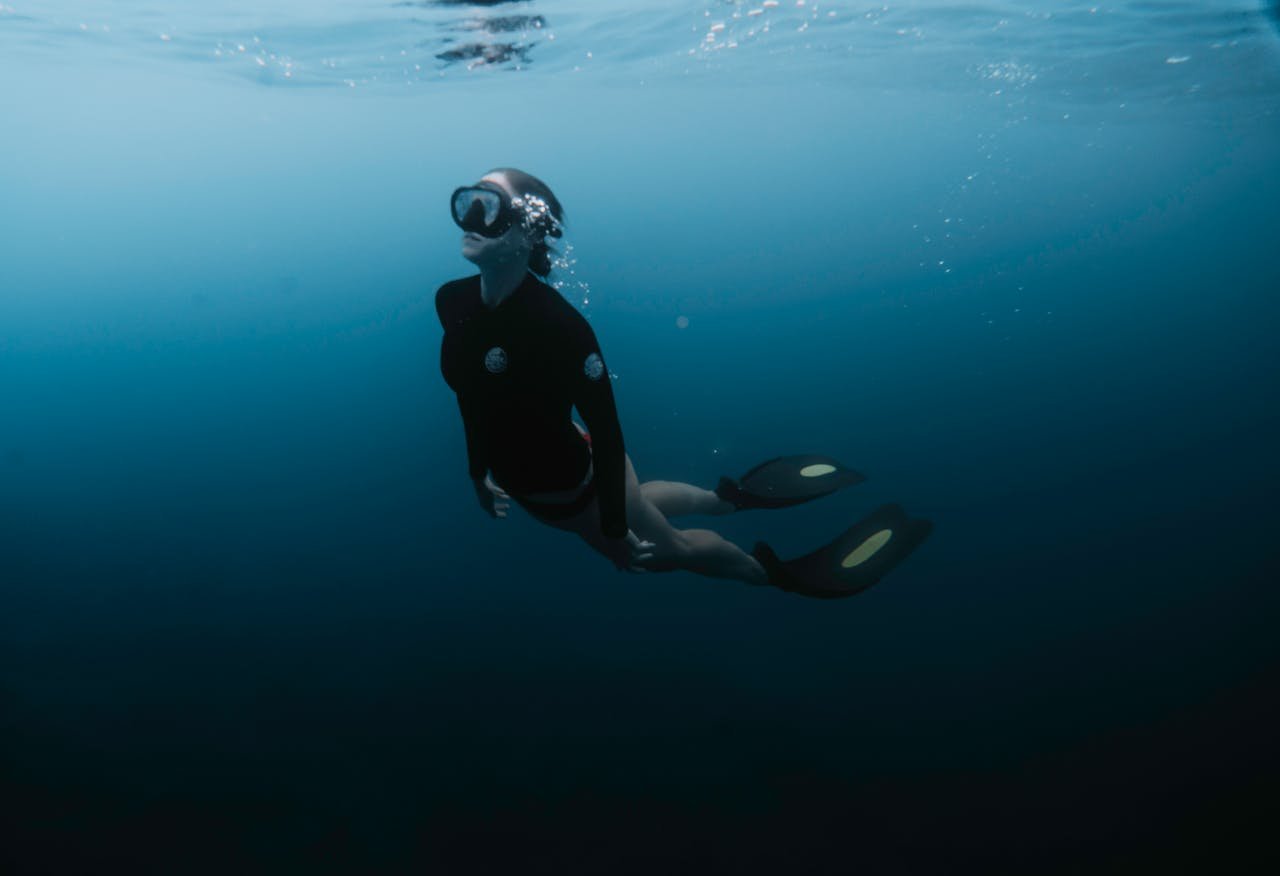Are you ready to embark on an underwater adventure? Snorkeling offers a captivating glimpse into the mesmerizing world beneath the ocean’s surface. Whether you’re a seasoned enthusiast or a curious beginner, having the right snorkeling gear is essential for a safe and enjoyable experience. In this comprehensive guide, we’ll delve into everything you need to know about snorkeling gear, from choosing the perfect mask to exploring breathtaking underwater destinations.
Choosing the Right Snorkel Mask
Types of Snorkel Masks
Snorkel masks come in various styles to cater to different preferences and needs. Traditional masks with a single lens offer a wide field of vision, allowing you to take in the underwater scenery with ease. Dual-lens masks provide better depth perception, ideal for observing marine life up close. Full-face masks have gained popularity for their innovative design, covering the entire face and allowing for natural breathing through the nose and mouth.
Factors to Consider When Choosing a Snorkel Mask
When selecting a snorkel mask, it’s essential to consider factors such as fit, comfort, and visibility. Ensure that the mask creates a watertight seal against your face to prevent leaks during your snorkeling adventures. Opt for masks with adjustable straps and silicone skirts for a comfortable and secure fit. Additionally, choose masks with tempered glass lenses for durability and clarity underwater, allowing you to enjoy unobstructed views of the aquatic world.
Selecting the Perfect Snorkel
Different Types of Snorkels
Snorkels come in a variety of designs, each offering unique features to enhance your snorkeling experience. Traditional J-shaped snorkels are simple and straightforward, featuring a flexible tube and mouthpiece for ease of use. Semi-dry snorkels are equipped with a splash guard at the top to prevent water from entering the tube, making them suitable for choppy waters or beginners. Dry snorkels feature a valve mechanism that seals the top of the snorkel when submerged, ensuring a completely dry breathing experience.
Features to Look for in a Snorkel
When choosing a snorkel, look for features that prioritize comfort, convenience, and performance. Opt for snorkels with purge valves for effortless clearing of water, allowing you to maintain uninterrupted breathing while snorkeling. Consider snorkels with comfortable mouthpieces made from soft silicone for extended wear without discomfort. Additionally, choose snorkels with flexible tubes that adapt to your movements underwater, providing optimal airflow and reducing jaw fatigue.
Picking the Right Fins
Types of Fins for Snorkeling
Fins are essential for propulsion and maneuverability while snorkeling, allowing you to glide effortlessly through the water. There are two main types of snorkeling fins: full-foot fins and open-heel fins. Full-foot fins feature a closed heel design and are worn barefoot, providing a snug and comfortable fit. Open-heel fins have an adjustable strap that accommodates booties, offering versatility for different water conditions and environments.
Considerations for Selecting Snorkeling Fins
When selecting snorkeling fins, consider factors such as blade design, stiffness, and buoyancy. Choose fins with efficient propulsion capabilities to help conserve energy and maximize your underwater mobility. Opt for fins with flexible blades that provide a powerful yet comfortable kick, allowing you to maintain speed and agility while snorkeling. Additionally, ensure that the fins have comfortable foot pockets that prevent chafing or blisters, allowing you to enjoy extended snorkeling sessions without discomfort.
Choosing the Best Snorkeling Wetsuit
Types of Wetsuits for Snorkeling
Wetsuits are essential for regulating body temperature and providing protection against the elements while snorkeling. There are various types of wetsuits available, ranging from full wetsuits to shorty wetsuits. Full wetsuits offer maximum coverage and warmth, making them ideal for snorkeling in colder waters or during cooler seasons. Shorty wetsuits are shorter in length and provide freedom of movement, making them suitable for snorkeling in tropical waters or warmer climates.
Factors to Consider When Choosing a Snorkeling Wetsuit
When selecting a snorkeling wetsuit, consider factors such as thickness, material, and fit. Thicker wetsuits offer better insulation and warmth in colder waters, while thinner wetsuits provide increased flexibility and mobility. Choose wetsuits made from high-quality neoprene material, known for its durability, flexibility, and thermal properties. Ensure that the wetsuit fits snugly against your body without restricting movement, allowing for maximum comfort and protection while snorkeling.
Accessories for Enhanced Snorkeling Experience
Snorkel Vests
Snorkel vests are inflatable devices worn around the torso to provide additional buoyancy and safety while snorkeling. They are particularly useful for beginners or inexperienced swimmers, offering peace of mind and confidence in the water. Adjustable straps allow you to customize the fit and buoyancy level of the vest according to your preferences and comfort level.
Snorkeling Gloves
Snorkeling gloves are designed to protect your hands from scratches, abrasions, and stings while exploring underwater environments. They are made from durable materials such as neoprene or lycra, providing both warmth and protection without compromising dexterity. Textured grips on the palms and fingers ensure a secure hold on equipment and underwater surfaces, allowing for better maneuverability and control while snorkeling.
Snorkeling Bags
Snorkeling bags are essential for storing and transporting your gear safely and conveniently. They come in various sizes and styles, ranging from lightweight backpacks to spacious duffel bags. Look for snorkeling bags with durable construction and ample padding to protect your equipment from damage during transit. Multiple compartments and pockets help organize your gear efficiently, allowing you to access essential items quickly and easily while on the go.
Proper Maintenance of Snorkeling Gear
Cleaning and Storing Your Equipment
Proper maintenance of your snorkeling gear is essential for prolonging its lifespan and ensuring optimal performance. After each snorkeling session, rinse your gear thoroughly with freshwater to remove salt, sand, and debris. Pay special attention to the mask lenses, snorkel tube, and fins, ensuring they are clean and free from any residue or buildup. Allow your gear to air dry completely before storing it in a cool, dry place away from direct sunlight.
Extending the Lifespan of Your Gear
Regular inspection and maintenance can help prolong the lifespan of your snorkeling gear and prevent premature wear and tear. Check your gear regularly for signs of damage or deterioration, such as cracks, tears, or loose straps. Repair or replace any damaged components promptly to avoid compromising your safety and comfort while snorkeling. Additionally, store your gear properly in a dedicated gear bag or container to protect it from dust, moisture, and environmental damage when not in use.
Safety Tips for Snorkeling
Importance of Safety Precautions
Safety should always be a top priority when snorkeling, regardless of your skill level or experience. Familiarize yourself with basic snorkeling safety guidelines and techniques before venturing into the water. Always snorkel with a buddy or in a group, and never swim alone in unfamiliar or hazardous conditions. Be mindful of your surroundings, including weather conditions, water currents, and marine life, and always prioritize your safety and well-being while snorkeling.
Basic Snorkeling Safety Guidelines
Follow these basic safety guidelines to ensure a safe and enjoyable snorkeling experience:
Always wear a properly fitting mask, snorkel, and fins that are comfortable and secure.
Choose snorkeling locations with calm, clear waters and minimal currents or waves.
Check weather forecasts and water conditions before snorkeling and avoid snorkeling in rough seas or inclement weather.
Practice proper snorkeling techniques, such as clearing your mask and snorkel, equalizing your ears, and conserving your energy while swimming.
Be aware of potential hazards, such as sharp coral, strong currents, or marine life, and avoid touching or disturbing underwater ecosystems.
Exploring Popular Snorkeling Destinations
Stunning Locations for Snorkeling Adventures
The world is full of breathtaking snorkeling destinations, each offering unique marine environments and unforgettable underwater experiences. From vibrant coral reefs to pristine tropical waters, there’s a snorkeling destination for every preference and skill level. Explore renowned snorkeling sites such as:
The Great Barrier Reef in Australia: One of the largest coral reef systems in the world, home to an incredible diversity of marine life, including colorful coral formations, tropical fish, and marine turtles.
The Maldives: A tropical paradise renowned for its crystal-clear waters, abundant marine life, and stunning coral reefs teeming with vibrant corals, reef fish, and pelagic species.
Hawaii’s Hanauma Bay: A protected marine reserve known for its calm, shallow waters and rich biodiversity, offering excellent snorkeling opportunities for beginners and experienced snorkelers alike.
Unique Marine Life to Encounter
Immerse yourself in a world of wonders as you explore underwater ecosystems teeming with diverse marine life. From schools of colorful reef fish to graceful sea turtles and elusive marine creatures, snorkeling offers unparalleled opportunities to observe and interact with fascinating underwater inhabitants. Keep an eye out for:
Vibrant Coral Reefs: Discover intricate coral formations and vibrant coral gardens, home to a dazzling array of reef fish, crustaceans, and invertebrates.
Exotic Fish Species: Encounter a kaleidoscope of tropical fish species, from clownfish and angelfish to parrotfish and butterflyfish, darting among the coral reefs in a dazzling display of color.
Majestic Marine Megafauna: Witness the awe-inspiring beauty of larger marine species, such as sea turtles, rays, and sharks, as they glide gracefully through the underwater landscape, offering unforgettable encounters and photo opportunities.
Tips for Beginners
Overcoming Common Challenges
Snorkeling can be both exhilarating and challenging, especially for beginners who are new to the underwater environment. Overcome common challenges and maximize your enjoyment with these helpful tips:
Practice Breathing Techniques: Focus on slow, deep breathing through your snorkel to conserve energy and maintain relaxation underwater.
Equalize Your Ears: Learn how to equalize your ears to relieve pressure and discomfort as you descend into deeper waters, preventing ear barotrauma and discomfort.
Choose the Right Gear: Invest in high-quality snorkeling gear that fits comfortably and securely, ensuring a hassle-free and enjoyable experience in the water.
Enhancing Your Snorkeling Experience as a Beginner
Take your snorkeling experience to the next level by following these tips:
Take Lessons: Consider taking a snorkeling course or lesson from a certified instructor to learn proper techniques and safety guidelines.
Snorkel with Experienced Companions: Snorkel with experienced friends or family members who can offer guidance, support, and encouragement as you explore the underwater world together.
Stay Relaxed and Calm: Focus on staying relaxed and calm while snorkeling, conserving energy and minimizing anxiety or stress to maximize your enjoyment underwater.
Advanced Techniques for Experienced Snorkelers
Mastering Breath-Holding Techniques
Advanced snorkelers can enhance their underwater experience by mastering breath-holding techniques:
Practice breath-holding exercises to increase your lung capacity and improve your ability to hold your breath for extended periods underwater.
Learn relaxation techniques to reduce stress and tension, allowing you to conserve oxygen and prolong your dive times effortlessly.
Perfecting Finning Techniques
Refine your finning techniques for better propulsion and maneuverability underwater:
Experiment with different fin strokes, such as the flutter kick and frog kick, to find the most efficient and effective technique for your swimming style.
Focus on proper body positioning and alignment to minimize drag and resistance, allowing you to move through the water with ease and grace.
Environmental Awareness
Respecting Marine Ecosystems
As stewards of the ocean, it’s essential to respect and protect marine ecosystems while snorkeling:
Avoid touching or disturbing marine life, including coral reefs, fish, and other underwater inhabitants, to minimize your impact on delicate ecosystems.
Refrain from standing on or kicking coral reefs, as they are fragile and easily damaged by human contact, leading to irreversible harm to marine life and habitat.
Practicing Responsible Snorkeling
Practice responsible snorkeling by following these guidelines:
Adhere to local regulations and guidelines regarding snorkeling activities, including designated snorkeling areas, wildlife viewing, and environmental conservation efforts.
Support eco-friendly tour operators and snorkeling providers that prioritize sustainability, conservation, and responsible tourism practices.
Benefits of Snorkeling
Physical and Mental Health Benefits
Snorkeling offers a myriad of health benefits for both body and mind:
Cardiovascular Fitness: Snorkeling is an excellent cardiovascular workout, improving heart health, circulation, and stamina as you swim and explore underwater environments.
Muscle Strength and Endurance: Snorkeling engages multiple muscle groups, including the core, arms, and legs, promoting strength, endurance, and toning throughout the body.
Stress Reduction and Relaxation: Immersing yourself in the tranquil underwater world promotes relaxation, stress reduction, and mental well-being, helping to alleviate anxiety and promote mindfulness.
Connecting with Nature
Snorkeling provides a unique opportunity to connect with nature and explore the wonders of the underwater world:
Awe and Wonder: Discover the awe-inspiring beauty and diversity of marine life, from colorful coral reefs to majestic marine megafauna, fostering a deeper appreciation and respect for the natural world.
Environmental Awareness: Gain a greater understanding of marine ecosystems, conservation issues, and environmental challenges, inspiring a sense of responsibility and stewardship for the oceans and marine life.
Conclusion
Embark on a journey of discovery and adventure with the right snorkeling gear. Whether you’re exploring vibrant coral reefs or encountering fascinating marine life, snorkeling offers a gateway to the enchanting world beneath the waves. Equip yourself with essential gear, practice safety precautions, and dive into unforgettable snorkeling experiences.
FAQs
What is the best type of snorkel mask for beginners?
Beginners may find full-face snorkel masks comfortable and easy to use, as they cover the entire face and allow for natural breathing through the nose and mouth.
How do I prevent water from entering my snorkel?
Choose a snorkel with a splash guard or dry top mechanism to prevent water from entering the tube, and practice proper snorkeling techniques, such as purging the snorkel regularly.
Are snorkeling fins necessary for beginners?
While not essential, snorkeling fins can enhance propulsion and maneuverability, making it easier for beginners to navigate through the water and conserve energy.
Can I wear contact lenses while snorkeling?
Yes, you can wear contact lenses while snorkeling, but consider wearing a mask with tempered glass lenses to prevent fogging, and ensure a watertight seal to avoid water entering your eyes.
What should I do if I encounter marine life while snorkeling?
Maintain a respectful distance from marine life, avoid touching or chasing them, and observe from a safe distance to minimize disturbance to their natural behavior.



